
News • Pediatric cardiology
3D ultrasound volume measurement of heart chambers
The 3D functions of the TOMTEC software package helped to establish reference values for volume ultrasound diagnosis of congenital heart defects in children.

The 3D functions of the TOMTEC software package helped to establish reference values for volume ultrasound diagnosis of congenital heart defects in children.

Dunlee, a leading provider of CT, X-ray, MR and 3D-printed tungsten products for the OEM market, is expanding its portfolio of MR products with Invivo MR coils for breast, lungs, neuro, cardiac and orthopedic applications. The Invivo coil family includes coils designed for a range of anatomies, element counts, field strengths and imaging applications. Outstanding design boosts image quality while…
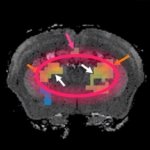
The speed of the human brain is remarkable. Almost immediately upon being exposed to stimuli, neurons are activated, prompting subconscious reactions and, a fraction of a second later, thought. But the speed at which we can noninvasively follow brain function using an MRI is not as impressive. Functional MRI (fMRI), which measures changes in blood-oxygen levels, has revolutionized neuroscience by…

Researchers at the University of North Carolina School of Medicine used MRI brain scans and machine learning techniques at birth to predict cognitive development at age 2 years with 95 percent accuracy. “This prediction could help identify children at risk for poor cognitive development shortly after birth with high accuracy,” said senior author John H. Gilmore, MD, Thad and Alice Eure…
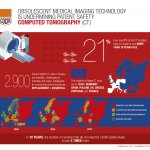
Despite COCIR raising the alarm as early as 2014, the age of the installed base of medical imaging equipment in Europe continues to increase. To draw attention to this worrying trend, COCIR is presenting new data on the current situation in four modalities of medical imaging, graphically demonstrating the extent of the issue. These were launched tday at the European Congress of Radiology 2019 in…
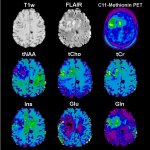
Ultra-high-field magnetic resonance tomography with field strength of 7 Tesla is slowly but surely entering clinical routine. ‘Thanks to very high spatial and spectral resolution, ultra-high-field MR permits detailed views of the human anatomy and can show precisely the metabolic processes such as those in the brain,’ said Professor Siegfried Trattnig, from Vienna’s Medical University.

Technological change is a major part of change management in radiology and it is inevitable. Artificial intelligence (AI) has slipped into every area of life including the hospital, and is already making decisions in radiology systems. The good news is that radiologists could win on two fronts, provided they play their cards well, a leading USA radiologist told delegates at a recent congress in…
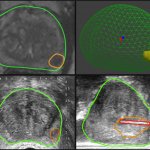
New medical software which overlays tumour information from MRI scans onto ultrasound images is helping to improve detection of prostate cancer by guiding surgeons as they conduct biopsies. Developed at University College London (UCL), the software is deployed via a system called SmartTarget and embraces artificial intelligence (AI) to use both systems in tandem to enable surgeons to pick up…

Imagine being able to install a new MRI anywhere with almost no external restrictions. Based in Ulm, Germany, lnterflex Medizintechnik GmbH has supplied systems for Faraday cages and exclusive MRI interiors since 2005. In addition, all MRI-providers have relied on the international experience of this firm. “The Intercabin shielding room ensures the operating reliability of modern MRI-systems.…

Tattoos are increasingly popular. Every eighth person in Germany has already felt the sting of getting a tattoo. A recent representative survey of the Federal Institute for Risk Assessment (BfR) revealed that nearly 90% of tattooed individuals considered them harmless to one’s health. Yet, if tattooed people are to be examined with magnetic resonance imaging (MRI), the question often arises of…

Magnetic resonance imaging (MRI) exams of the knee are essential to orthopedic surgeons for diagnosing the cause of symptoms in patients with knee pain and planning arthroscopic treatment. Yet the surgeons who treat patients based on knee MRIs and the radiologists who interpret those knee MRIs often work in their own silos of specialization, rarely communicating and sharing information, according…

Brain imaging in patients with cognitive complaints need to be viewed differently when using MRI to diagnose and treat patients with dementia, says Dr. Christopher Hess, who will discuss the role of MRI in the adjunctive diagnosis of dementia in his talk at the Garmisch Symposium. In addition, general radiologists need to recognize the important findings related to dementia when making a…
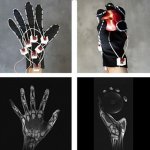
In his talk at the Garmisch Symposium, entitled “MRI in 5 minutes – Dream or Reality?” Dr. Daniel Sodickson of the New York University School of Medicine will give attendees a preview of the MR scanners of the future, which he likens to self-driving cars. Sodickson — a professor and vice chair for research in the department of radiology at NYU, a principal investigator at the Center…
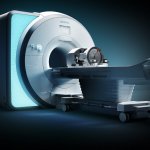
Siemens Healthineers and Insightec announce the CE clearance of Exablate Neuro compatible with Magnetom Skyra, Prisma and Prisma Fit scanners from Siemens Healthineers. Exablate Neuro uses focused ultrasound for treatments deep within the brain with no surgical incisions. MR imaging provides a complete anatomical survey of the treatment area, patient-specific planning and real-time outcome…
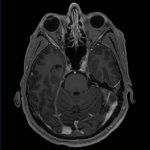
Researchers are using artificial intelligence to reduce the dose of contrast agents like Gadolinium that may be left behind in the body after MRI exams, according to a study presented at the annual meeting of the Radiological Society of North America (RSNA).
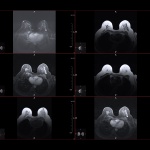
MRI offers unequalled sensitivity and specificity in breast cancer detection. Yet, it is poorly accepted preoperatively. Recently, eminent radiologist Francesco Sardanelli, professor for radiology at Milan University and Chief of Radiology at the IRCCS Policlinico San Donato in Italy, unveiled preliminary results that could further MRI acceptance among multidisciplinary teams.

New 7-Tesla MR methods could potentially shed light on cardiomyopathies’ principles, according to a leading French radiologist who also stresses the importance of teamwork between radiologists, cardiologists, surgeons and anaesthesiologists. Morphologic and dynamic information of the myocardium is achieved with millimetric resolution (0.9x0.9 square mm). Strong intensity variations…
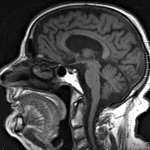
One day, MRI brain scans may help predict whether older people will develop dementia, new research suggests. In a small study, MRI brain scans predicted with 89 percent accuracy who would go on to develop dementia within three years, according to research at Washington University School of Medicine in St. Louis and the University of California San Francisco. The findings, presented at the…

The new 1.5 Tesla MRI from Siemens Healthineers, Magnetom Sola, is packed with helpful algorithms and other functions. AI-supported systems monitor patients and scan parameters and ensure consistent image quality. Whilst visitors at this year’s ECR-Expo admired the new device, Prof. Ulrike Attenberger has already tested it in practice.
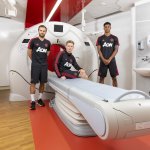
Manchester United Football Club has announced a renewed multi-year agreement with Canon Medical Systems Europe as its official medical systems partner. The unique partnership will ensure that world-class players continue to gain instant access to advanced imaging equipment to examine injuries and undertake pre-emptive screening for preventable injuries, improving player welfare and maintaining…

Nanomedicine is set to play an increasingly important role in the future diagnosis and treatment of cardiovascular disease. Understanding the importance of nanomedicine was enhanced by four experts who spoke at the British Cardiovascular Society conference held in June. The technology – dealing with dimensions and tolerances of less than 100 nanometres and especially the manipulation of…
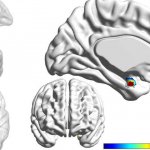
New research from the Westmead Institute for Medical Research and the University of Sydney has found that neurons deep inside the brain could hold the key to accurately diagnosing bipolar disorder and depression.

Machine learning is increasingly helping radiologists to acquire faster and better quality images, and measure heart function. This is just the tip of the iceberg; artificial intelligence has far more to bring to the heart, explained Daniel Rueckert, Head of the Department of Computing at Imperial College London, during CMR 2018. Machine learning (ML) is becoming a valuable assistant for…
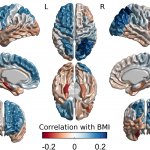
Clinicians should consider how the way we think can make us vulnerable to obesity, and how obesity is genetically intertwined with brain structure and mental performance, according to new research. The study, led by researchers at the Montreal Neurological Institute and Hospital (The Neuro), was an examination of MRI and cognitive test data from 1,200 individuals, supplied as part of the Human…

Intervention in ventricular arrhythmia has improved dramatically over the past three decades thanks to advances in imaging and cooperation between cardiology and radiology, according to Professor Josep Brugada MD, director of the paediatric arrhythmia unit at Sant Joan de Déu Hospital in Barcelona. ‘Echocardiography, CT and MRI, combined with cardiology,’ he said, ‘have revolutionised the…